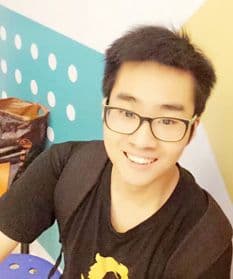Artist Profile
Song Haokun previously worked as a Visual Effects (VFX) Artist at a professional post-production company. This role was not merely a technical execution position but a crucial link at the intersection of creativity and technology. In his daily work, he was required to communicate closely and effectively with the creative team, directors, and various post-production departments such as editing, color grading, and compositing to ensure the final visual output precisely served the project's overall narrative and artistic style. During his tenure, he was fully involved in a variety of projects undertaken by the company, with a scope that included long-cycle, complex television series; fast-paced, high-quality commercial advertisements; and goal-oriented corporate videos focused on clear communication.
In his technical practice, Song Haokun became familiar with and adhered to the standardized industrial workflow of 3D visual effects production, with hands-on capabilities at various stages. His technical skills were centered around several mainstream, industry-standard software packages:
Application of Maya: In the initial stages of the production pipeline, he primarily used Maya to create 3D assets. This included high-precision polygonal modeling based on 2D concept art and designs, UV unwrapping and layout for subsequent texturing, and basic rigging and animation testing for characters or objects that required movement. He understood the importance of optimized model topology and logical UV layouts for subsequent rendering and performance efficiency.
Proficiency in Houdini: For complex dynamic effects shots, he primarily utilized Houdini's procedural node-based system. Whether simulating delicate fluids for an advertisement, fantastical particles swirling around a product, or natural phenomena like gas and smoke, he would build simulation networks in Houdini, iteratively adjusting parameters to balance physical realism with artistic aesthetics. This process also honed his ability to break down complex problems and implement logical solutions through technical means.
Exploration of UE5: Aligning with the industry trend towards real-time technology, he also learned and explored the application of Unreal Engine 5. For certain projects, he experimented with using UE5 for real-time rendering and pre-visualization, leveraging its efficient feedback mechanism to accelerate the creative iteration process. This reflects his interest in and willingness to learn emerging industry technologies.
Coordination with Supporting Software: Throughout the workflow, Photoshop served as an essential tool for handling static images and creating base textures. By integrating it with 3D software, he could provide models with appropriate textural detail and perform preliminary compositing and adjustments on single-frame renders to evaluate their effectiveness.
Through extensive hands-on project work, he applied his technical skills to a variety of commercial needs, gaining invaluable experience. For instance, in product-centric commercials for brands like "Zulijian Senior Shoes" and "Jingrun Pearl," the focus was on using visual effects to beautify the product and highlight its key selling points. This required the artist to be creative yet restrained, ensuring the effects served as a finishing touch that enhanced the product rather than overshadowing it.
In contrast, for projects like "JD.com Home Decoration," which involved scene construction, the challenge shifted towards creating believable and atmospheric living environments. The work would lean more towards detailed scene modeling, adjustment of PBR (Physically-Based Rendering) materials, and realistic lighting setups, with the goal of bringing the digital scene as close as possible to a photographic standard of beauty.
Furthermore, participating in large-scale event projects like the "iQIYI Annual Gala" presented another set of challenges. Such projects typically have very tight deadlines and potentially changing creative briefs, requiring team members to be highly adaptable and efficient. Working in this environment gave him a profound appreciation for the importance of time management, version control, and clear communication among team members.
In summary, through systematic work at the post-production company, Song Haokun not only built a solid practical foundation in professional techniques but, more importantly, applied these skills flexibly across projects with varying business logic and artistic styles. This experience marked his transition from a software user to a mature project participant who understands that successful visual effects are not just a display of technical skill but a comprehensive embodiment of teamwork, creative interpretation, and project management.
